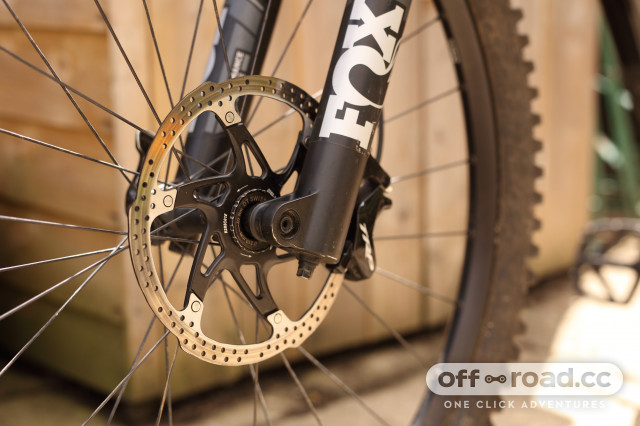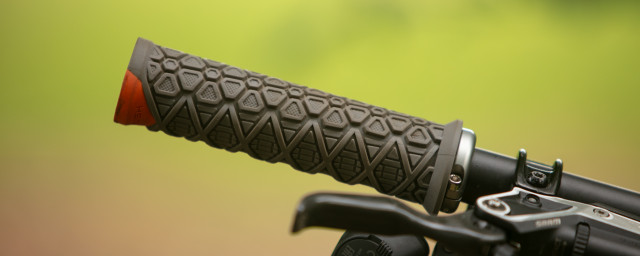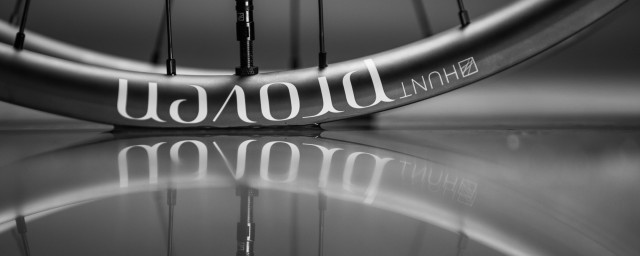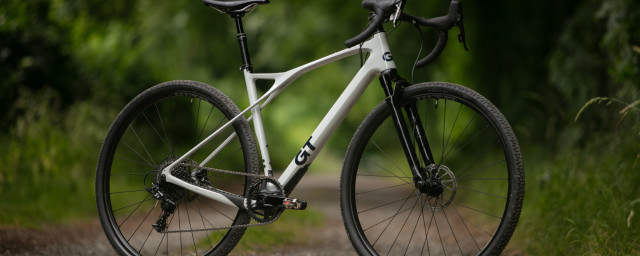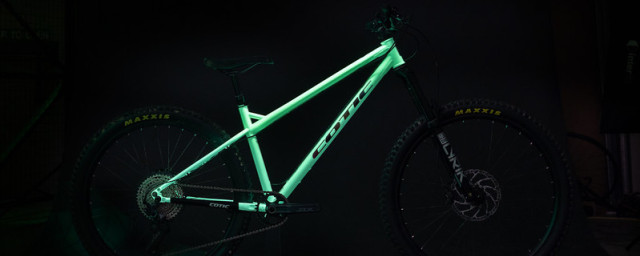How do hydraulic brakes work?

Mountain bikers invest a lot of money to upgrade components that make them faster, like lighter wheels and better suspension. But stopping power is essential to rider confidence, and you’ll never go faster if you aren’t confident of slowing down when required.
- How to bleed Shimano, Hope, TRP and Tektro hydraulic brakes
- Six money-saving bike maintenance tips
- How to bleed SRAM, Hayes and Magura brakes
Aside from suspension design, the evolution of hydraulic disc brakes has significantly enhanced mountain bikers' confidence. When you know that only a touch on the brake lever is required to significantly decelerate, you’ll be more confident of dropping into steep terrain, rolling into a jump or sending it off a drop.
How do mountain bike brakes work?
During the early 1990s, only mountain bikers with exceptional hand and finger strength had any confidence on a long descent. That’s because cable-actuated disc brakes are only as good as your ability to keep pressure on the brake lever.
Few mountain bikers have the hand strength and skill to keep constant pressure on a cable-actuated brake lever while steering and balancing down a technical section of trail. The solution was to use hydraulic pressure to boost brake power, enabling a much lighter touch from riders for greater proportional brake force.
Hydraulic brake lines are filled with fluid, and at the levers, there are reservoirs. When you pull a hydraulic brake lever, a tiny piston compresses all that fluid to actuate the caliper, which clamps the brake disc.
Unlike a cable-operated brake, the hydraulic system can sustain much more pressure on the caliper with only mild pressure on the brake lever. That’s why hydraulic brakes feel much more potent to riders, allowing them better modulation and braking power on long, steep, descents.
Being smarter about maintenance
Hydraulic disc brakes have revolutionised mountain biking and off-road cycling, giving riders more confidence when terrain or trails become steep. But much like mountain bike suspensions, hydraulic disc brakes have a service burden to keep them operating as intended.
Air bubbles will form in a hydraulic brake system over time, compromising performance. Even the most expensive mountain bike brakes, with the best build quality and connector integrity, can’t keep out the finest dust particles and mud, with environmental contaminants degrading brake fluid.
Once you start experiencing a lever that pulls to the handlebar, without any corresponding brake power, it’s time to purge your brake fluid and replace it through ‘bleeding’. It can be a messy process if you are unprepared and use incorrect tools, yet there are bleed ports that work seamlessly with the variety of attachments available to help you service.
Brake bleeds aren’t complicated, but you must be meticulous with the service sequence to ensure that those bleed ports, hoses and connectors don’t get air trapped in the system again. Recommended brake bleeds should be once a riding season, even if your brakes feel fine. Why go through the trouble of bleeding them if the stopping power and lever feel are good? Because preventative maintenance is much smarter than having a brake fail out on the trail.
Do you need two- or four-piston calipers?
Hydraulic mountain bike brakes feature a two- or four-piston caliper design. Two pistons, for most riders, that’s adequate, giving confident stopping power in steep terrain and fade-free performance on long descents.
But what about four-piston calipers? By doubling the piston count, you have twice the number of pressure points and more surface area acting on the brake disc. That equates to a significant increase in braking power and why four-piston calipers are popular for downhill racers and freeride mountain bikers, where absolute stopping power is essential. However, they're finding popularity in even cross-country racing these days.
If you aren’t riding double-black graded downhill trails, why would you invest in a four-piston caliper? Momentum and greater stopping power. That’s why. For larger riders or those on e-bikes, where the bike mass is considerable, managing momentum is essential, and the stopping power of four-piston calipers becomes valuable.
The brake force or a four-piston caliper can be extreme and blunt, especially at lower speeds, which comes as a marginal downside. For riders who prefer a dexterous feel from their brake lever, and sensitive modulation when teasing the brakes down slippery or extremely dry terrain, a two-piston caliper’s inherently more linear ‘feel’ might be superior.
Rotor size matters
If a four-piston caliper delivers more powerful brake force than a two-piston configuration, what happens when altering brake disc size? Quite a lot.
When riders upsize from a 160- to 180mm disc, the increase in distance from the wheel axis to the spinning outer edge of the brake disc gives a lot more leverage and power.
Larger brake discs also have more material to absorb the temperatures generated when brake pads pressure the disc surface, converting friction to heat. When brake discs overheat, they start to fade, often the source of that squealing turkey noise out on the trail.
The larger your brake disc diameter, the less your heat-induced brake fade. Increased brake disc size greatly reduces fade for those 10-minute descents or larger riders on heavier e-bikes.
Brake disc size has slowly increased in diameter. For years, the default configuration for most dual-suspension mountain bikes was a 180mm rotor at the front, with 160mm at the rear. As frame design and suspension technology have evolved, making it easier for average riders to roll into more technical terrain, brake sizes have increased. On many current trail and enduro brakes, it’s not unusual to see a factory-fitted 200- or 203mm front brake rotor.
But if big is better, what’s the larger diameter you should ride? Brake discs 200mm+ were once only the preserve of downhill racers, but more single-crown mountain bike forks now have adaptors to fit 230mm brake rotors.
Thickness matters
When considering brake rotor size, it’s worth considering two dimensions instead of being obsessed with diameter. Some brake brands have started producing thicker brake discs due to increased rider demands. The increase might sound marginal, from the broad industry standard of 1.8mm to 2- and 2.3mm, but there are sound design reasons for thicker brake discs.
Additional thickness in the brake disc improves heat absorption and enhances structural integrity. The forces that act on a spinning brake rotor by a four-piston caliper, with the wheels cornering at an angle while pinging through the terrain, are extreme. And those acute angular forces during a peak braking moment can warp brake discs, which are frustrating to try and straighten.
Thicker brake rotors are more resistant to warping, making them valuable to enduro and downhill riders, who are most demanding on brakes. If you want to upsize from 180- to 200mm for your trail bike, it might be worth going thicker, too, maximising the technology benefits of modern brake rotors.
Mineral oil vs DOT fluid, which is best?
Hydraulic brake systems run on one of two fluids, mineral oil and DOT fluid (of 4 or 5.1 varieties), and both of these come with their own pros and cons. But it must be noted that these oils are not interchangeable as either can perish seals and other components if bled into the wrong system. Though both fluids are incredibly resistant to compression, hence their effectiveness in hydraulic brakes.
Mineral oil is found in Shimano, Magura and TRP braking systems, although SRAM does use it for its budget-friendly DB8 brakes. This oil is much kinder to skin and the environment but it has a lower boiling temperature, so under extreme braking scenarios where the brake is engaged heavily for long periods, the fluid can boil and the brake will lose power. Mineral oil is also unregulated, so it can differ from brand to brand.
DOT fluid is what's found in most of SRAM's brakes, as well as Hayes', Hope's and others. It's the very same stuff that's found in a car's brakes. DOT fluid is corrosive and can harm your skin and a bike paint. It's also not so great for the environment, so correct disposal must be ensured. The advantages of DOT fluid is that it's easily accessible and much better regulated. Its boiling point is also much higher, so it can cope with more abuse under extreme braking. DOT fluid does draw moisture from the atmosphere, however, so it can be contaminated more easily, and even in the bottle, it has a shorter shelf life once opened.




